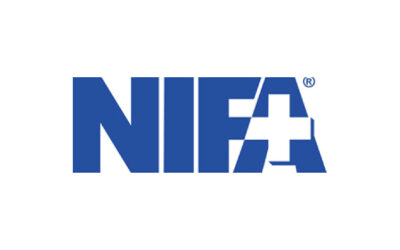
BY TONY THURMOND, CRCST, CIS, CHL
New sterile processing (SP) employees must learn about the various areas and interdisciplinary teammates with whom they will interact, and it is equally important that individuals from other departments understand what takes place in the sterile processing department (SPD).
It is essential that both facility-employed and unaffiliated physicians learn the policies and procedures of the organization where they will provide patient care. They must be oriented to the organization’s electronic record system. They must learn about emergency policies and procedures, block scheduling practices and medication ordering protocols. The list goes on. Understandably, many surgeons and physicians want to jump right in – practice medicine, see patients and perform surgeries – but they will also benefit from more focused orientation into areas that serve the operating room (OR) and other direct-care areas. SP professionals should make a concerted effort to orient new surgeons to the SPD and its processes. It is critical to discuss how the two departments can work together to ensure instruments and equipment are processed properly, well-functioning and safe for patient use.
Some SP leaders fail to invite new surgeons to the SPD for a tour. In this scenario, the new surgeon and SP staff may first meet when an instrumentation-related issue or other problem arises. Sometimes, SP leaders, technicians and liaisons may also assume that surgeons are too busy and don’t have time to visit the SPD. Likewise, a new surgeon may assume an SPD tour is unnecessary because they believe they already have a firm handle on what is involved in instrument processing. Still, every new surgeon, regardless of their knowledge and experience level, will benefit from an SPD orientation. The same is also true for new SP professionals: they should become oriented and acclimated to the surgical environment and their colleagues.
Following are the steps we take at my facility to introduce new surgeons to our SPD.
Set the stage: Before the visit, gather pertinent information to help make orientation beneficial for the surgeon and the SP team. Some of this can be provided by the physician recruitment team. Helpful background information includes where the surgeon attended school and attained their fellowship; previous facilities where they performed procedures; specialties or specific procedures they practice (for example, they may be a general surgeon but specialize in colorectal procedures, or they may be an orthopedic surgeon who specializes in spinal procedures but does not practice orthopedic trauma); copies of the surgeon’s preference cards and tray recipes; and any specialized instrumentation the surgeon may require. The SPD should also be ready to provide the surgeon with a list of instrument trays in inventory and the devices contained in each set. Ideally, this information should be sent to the surgeon before the SPD orientation so they can familiarize themselves with the devices and be ready with questions or concerns about the sets.
Prepare SP staff: The day of the visit, SP leaders should prepare their employees for the surgeon’s onboarding visit to the department. Invite all team members to be part of the process and encourage them to interact with the surgeon to start forging a positive reciprocal relationship. Departmental orientation allows the SP team to show pride in their department and demonstrate their commitment to doing their work consistently, effectively, efficiently and safely – in accordance with policies and procedures, standards, guidelines, regulations and best practices – while also making themselves available to answer the surgeon’s questions and address any concerns.
Post-tour follow-up: Like any other meeting or orientation, it is helpful to follow up to ensure that all questions and concerns are addressed and answers are provided. The follow-up process needn’t be a formal one, but it is essential that it is consistent and ongoing. Consider the following:
- After the surgeon has visited, review the list of things to investigate and establish a plan to provide answers or obtain necessary items based on the orientation.
- Email the list to the surgeon along with a summary of the visit. Let them know that the list is being reviewed and a plan of action will be shared soon.
- Visit the OR while the surgeon is operating. Check in to see how things are going regarding SP-provided instrumentation and supplies.
- Solicit advice from the surgeon regarding any changes they believe could be made to help the SPD become more successful in the services provided to the OR.
- Continue to follow up with the surgeon and other OR staff to become aware of any problems, challenges or needs.
Conclusion
When new surgeons first join a facility, they don’t automatically know the tray recipes or instrument and equipment inventory. Likewise, they don’t know the SPD’s layout, processes for cleaning and sterilization, or policies and procedures that the OR should follow to help contribute to safe, effective instrument reprocessing. Having an effective onboarding program for all new surgeons (and other OR team members as well as professionals in other areas the SPD serves) orients these individuals to the people and processes in the SPD. Such a program also allows the SP team to build more effective relationships with their new interdisciplinary team members by answering questions, sharing practices and expectations, and working together toward improvements.
– Tony Thurmond, CRCST, CIS, CHL, serves as sterile processing manager for Dayton Children’s Hospital. He is also an HSPA past-president who currently serves as an HSPA board director.










